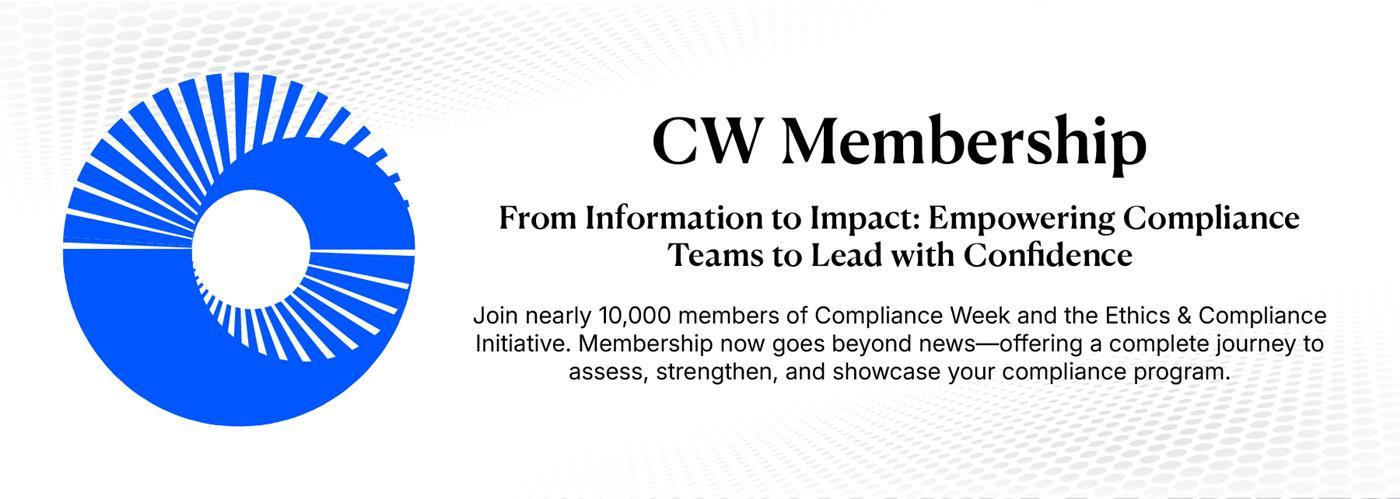- Home
-
News
- Back to parent navigation item
- News
- National Compliance Officer Day 2025
- Accounting & Auditing
- AI
- AML
- Anti-Bribery
- Best Practices
- Boards & Shareholders
- Cryptocurrency and Digital Assets
- Culture
- ESG/Social Responsibility
- Ethics & Culture
- Europe
- Financial Services
- Internal Controls
- Regulatory Enforcement
- Regulatory Policy
- Risk Management
- Sanctions
- Surveys & Benchmarking
- Supply Chain
- Third Party Risk
- Whistleblowers
- Opinion
- Benchmarking
- Certification
- Events
- Research
- Awards
-
CW Connect
- Back to parent navigation item
- CW Connect
- Sign In
- Apply
- Membership
Ask a CCO: What’s your role in creating/implementing cyber-security policies?
By Compliance Week2021-03-02T18:16:00

Five senior compliance practitioners share insights on their roles in implementing and overseeing cyber-security policies and procedures.
THIS IS MEMBERS-ONLY CONTENT
You are not logged in and do not have access to members-only content.
If you are already a registered user or a member, SIGN IN now.
Related articles
-
 Premium
PremiumQ&A with FINRA’s Greg Ruppert on the organization’s use of Artificial Intelligence
2025-12-19T20:33:00Z By Aaron Nicodemus
Greg Ruppert, Chief Regulatory Operations Officer at the Financial Industry Regulatory Authority (FINRA), recently shared insights with Compliance Week regarding the self-regulatory organization’s use of Artificial Intelligence in monitoring trends in the market, spotting threats, and keeping its members informed.
-
 Opinion
OpinionWhat the Copilot Usage Report 2025 Means for Corporate Compliance
2025-12-18T18:48:00Z By Tom Fox
Microsoft’s Copilot Usage Report 2025 offers compliance professionals a rare, data-driven look at how artificial intelligence is actually being used by millions of people, rather than how organizations assume it is being used.
-
 Opinion
OpinionEmerging antitrust risks in the expanded use of AI
2025-12-16T19:24:00Z By Lee F. Berger and Robert Klotz, CW guest columnists
Concerns over competitors using AI pricing tools to fix prices have dominated antitrust discussions in the U.S. and EU. Recent cases show how algorithmic pricing might enable unlawful coordination.
More from Opinion
-
 Opinion
OpinionHow to make the business case to upgrade records management systems
2025-12-10T15:29:00Z By Mark Diamond, CW guest columnist
Companies are giving their records management programs a makeover, and not for the reasons you may think. What used to be a sleepy back-office legal department function is now front and center, often driven by compliance teams. Organizations are discovering that a “save everything, forever” de facto policy doesn’t ...
-
 Opinion
OpinionWhy the EU’s new Machinery Regulation is a wake-up call on cybersecurity
2025-12-05T21:00:00Z By Pekka Alasaari and Johanna Schüßler, CW guest columnists
The European manufacturing industry is on the cusp of a regulatory shift that promises to reshape how machines are designed and operated.
-
 Opinion
OpinionWrite supply chain resilience into the contract
2025-12-01T16:04:00Z By Craig Conte, CW guest columnist
The only thing constant is change. Shouldn’t we be ready for that in our contracts?
- Terms and Conditions
- Privacy Policy
- Do Not Sell My Info
- © 2025 Compliance Week
Site powered by Webvision Cloud






